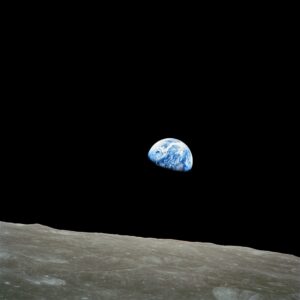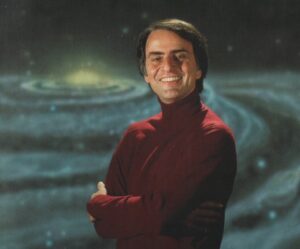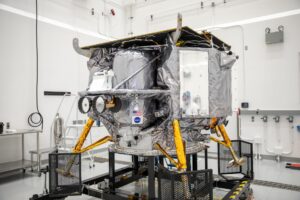NASA’s long awaited Space Launch System, commonly referred to as SLS, has been a dream of many since the Shuttle program was retired over a decade ago. After years of designing, manufacturing, testing, and assembly, that dream is becoming a reality. Contemplating its ultimate mission, we watched in awe as the massive Moon rocket rolled out from the Vehicle Assembly Building (VAB) and made its way to Launch Complex 39B. This is a rocket designed and built to take humans to the Moon.
Although Artemis I, the first flight of SLS, will be un-crewed, the rocket and its command module are human-rated. Artemis I will be a full-up, end-to-end systems test, with the Orion capsule flying around the Moon on a mission that NASA expects to take place over 25 days. That first flight is scheduled for later this summer. This rollout to the pad is part of the preparation for a wet dress rehearsal of launch day activities. After this initial test, SLS will roll back to the VAB, undergo final checks and await its day in history, the maiden voyage.
Ryan Chylinski, and our Space Coast Chronicler, John Pisani, were on site to capture, witness, and be part of humanity’s first look at the completed rocket, which now sits on its launchpad, ready for final tests and check-outs.
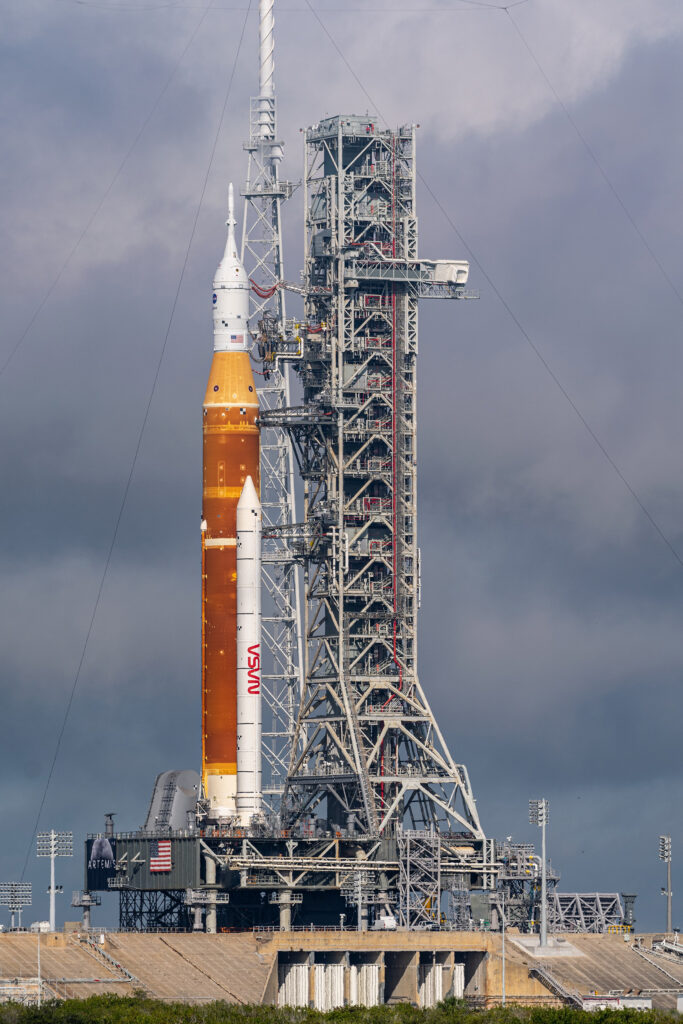
Photo Credit: John Pisani / Cosmic Perspective
NASA's SLS in Virtual Reality
Watch NASA’s massive SLS rocket and crawler roll to launchpad 39B in cinematic 3D for VR headsets (free episode)
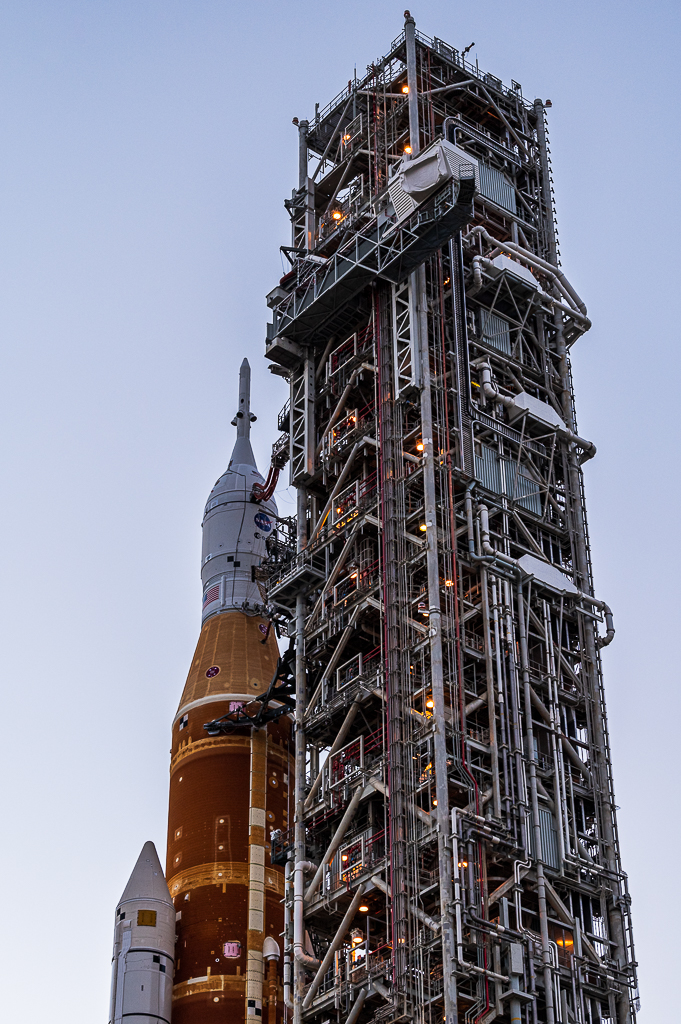
Photo Credit: John Pisani / Cosmic Perspective
The door to high bay three on NASA’s VAB opened on the morning of March 17, 2022 to reveal a Mobile Launcher. Standing behind the maze of plumbing wrapped around the towering structure was a fully-stacked SLS rocket for the Artemis I mission. Later that evening, after thousands of people trickled into Kennedy Space Center and gathered around the various sites near the VAB and Crawlerway, SLS rolled to Launch Complex 39B for the very first time.
This was a big event. In addition to the hundreds of media, there were thousands of employees with their families and friends, as well as VIPs and other guests. The energy was fantastic! Lots of kids running around, lots of laughter and lots of memories made on a historical day. I know I was deeply inspired by this day. Knowing that so many people worked so hard on SLS reminded me the importance of documenting these moments in order to archive humanity’s achievements and tell the story of inspiration, amazement, the sheer scale of it all and how it will benefit humanity.
During the Apollo Program NASA was able to perfect and develop many technologies and solve several engineering problems that would lead to benefits here on Earth. Digital flight-controls were once unheard of, but it guided Apollo astronauts to the Moon and are now integral to modern airliners and even automobile technology. Food safety, space blankets, quake-proof structures and rechargeable hearing-aids are all spin-off technologies from the Apollo Program.
There are many things we can be thankful for that were thought up because of the need for it in space.
Imagine what advancements can be made now.
Video Credit: John Pisani / Cosmic Perspective
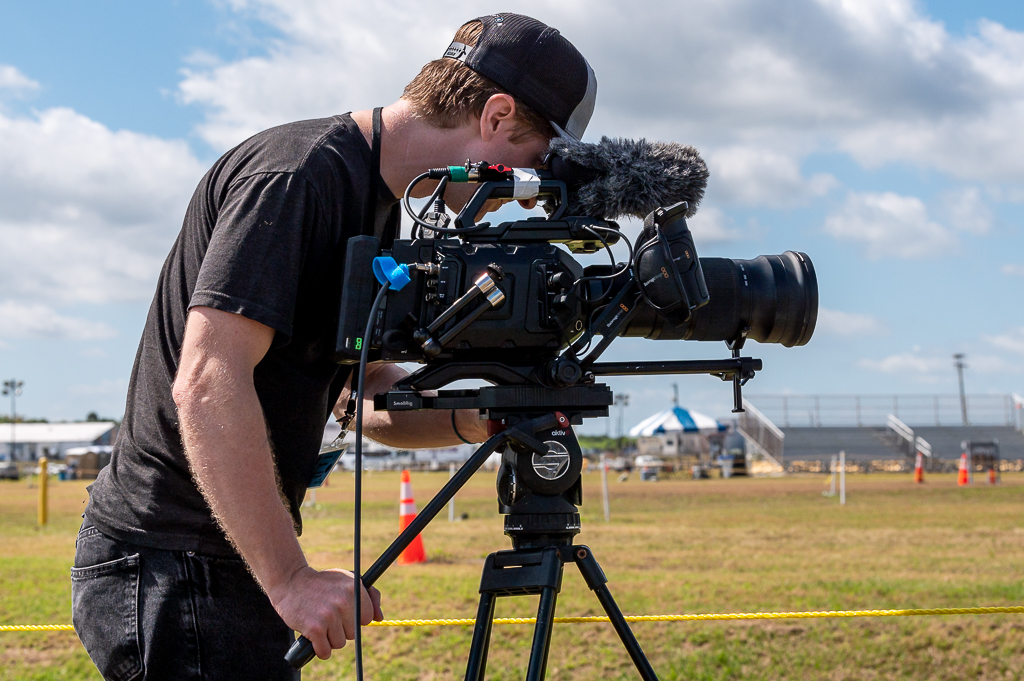
Behind-the-scenes photos
Photo Credit: John Pisani / Cosmic Perspective

While there are mixed opinions around NASA’s Space Launch System, not one of them crossed my mind that Thursday evening. As that crawler rolled by, I had to look straight up to see SLS in its entirety. Aside from pure amazement, I was energized knowing that this gigantic rocket was just a tiny piece in a grand plan to explore our cosmic backyard.
The energy that I felt that evening came in a few parts. First, was the excitement of being around so many other people who were just as excited if not more excited than I was, but I was also energized by the fact that this rocket, along with other engineering marvels will enable our astronauts to explore further and longer than ever before. If you think the International Space Station is awesome, just wait until we have orbiting stations around the moon, on its surface, and then eventually scientific and artist outposts on the surface of Mars!
My day at Kennedy Space Center was a long one. I arrived at the press site mid-morning and did not leave until late that night, but it was all worth it. Having the time to hang out with fellow media colleagues that are not in Florida for every launch or event, meeting new people, and capturing great content all while roaming the press site lawn and surrounding facilities is always a great way to spend a day or two.
Media was also invited back the next morning to go to a viewing site near pad 39B. We arrived before sunrise but would have to wait several hours for the fog to burn off. Eventually, the fog began to move and SLS appeared atop the launchpad surrounded by the gorgeous landscape that makes up Kennedy Space Center and the greater area of Merritt Island National Wildlife Refuge.
The fast-moving fog created a wonderful light show across the landscape. A shifting mix of bright sunlight and shadows briefly exposed parts of the rocket and eventually its entirety. When we got our first glimpse at the top of SLS, the sunlight glinted off the bright white and there were a few cheers from the media crowd.
There’s one other thing I always find cool to see at these big events when at the press site. All of the little pods of people spread out across the lawn, or maybe along the Turn Basin, all recording their news segments, speaking to their viewers during live streams, and raising the masts on the news vans to broadcast their stories. And then there is me in the little pod I lugged gear around with, out there amongst them all, recording history and doing my part to tell the story of Artemis I.
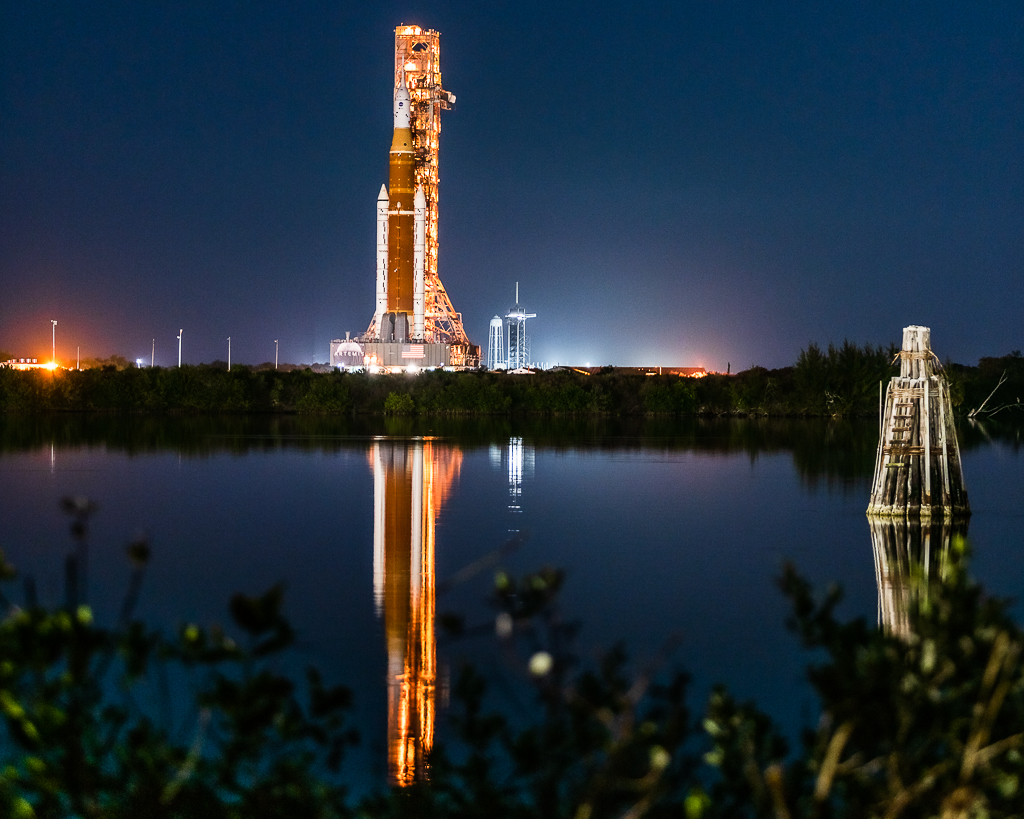
SLS reflection in the Turn Basin with SpaceX’s LC-39A in the distance.
Photo Credit: John Pisani / Cosmic Perspective
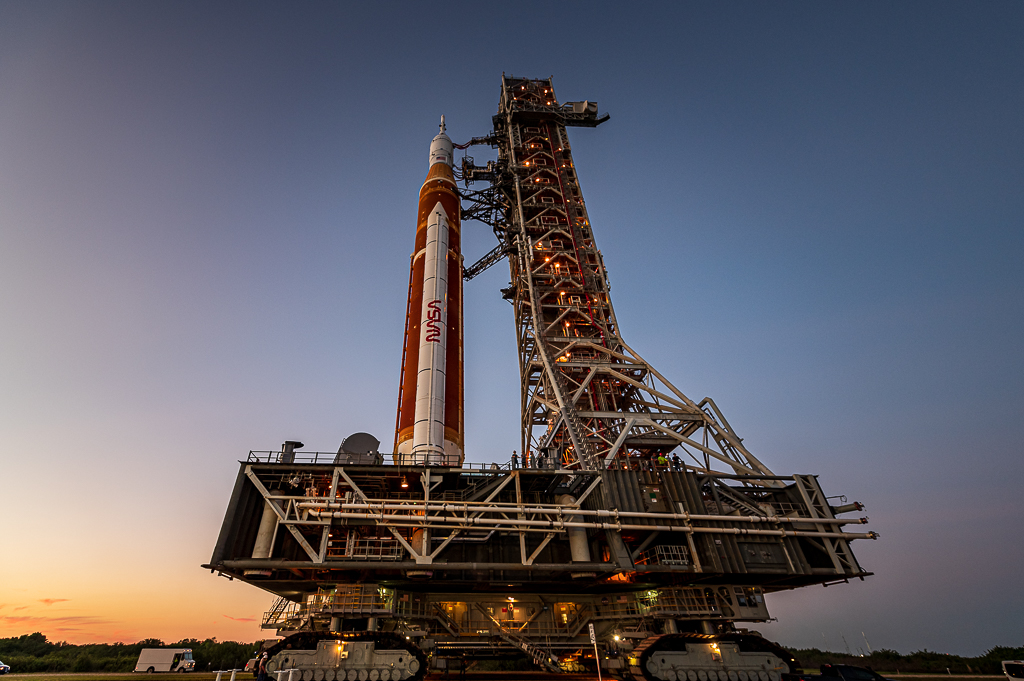
The Mobile Launcher and Crawler with SLS directly in front of me at dusk.
Photo Credit: John Pisani / Cosmic Perspective
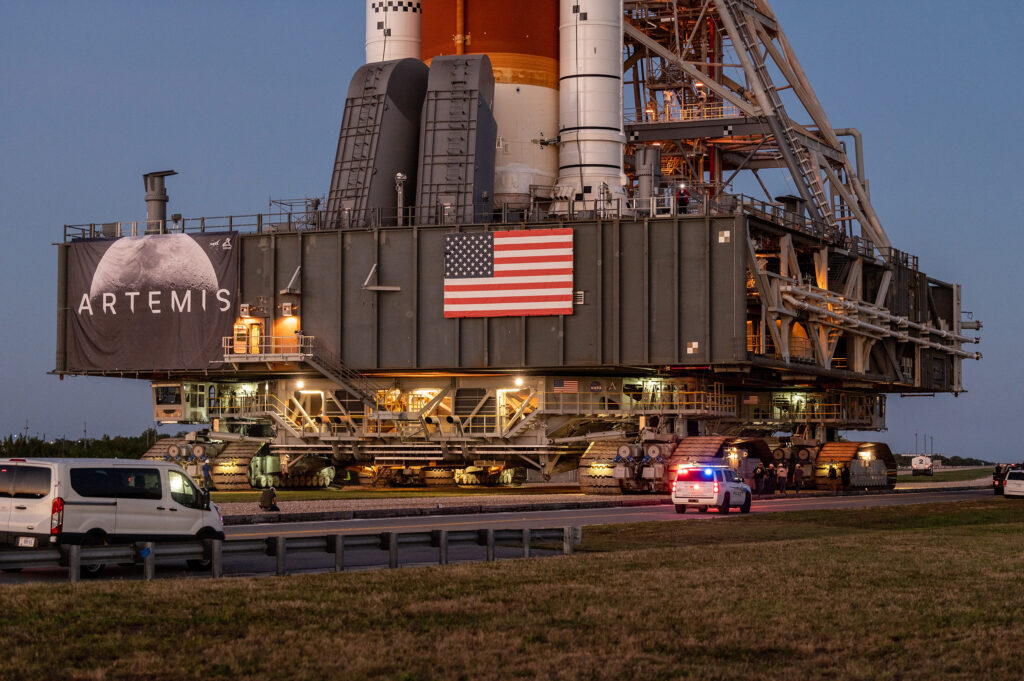
Photo Credit: John Pisani / Cosmic Perspective
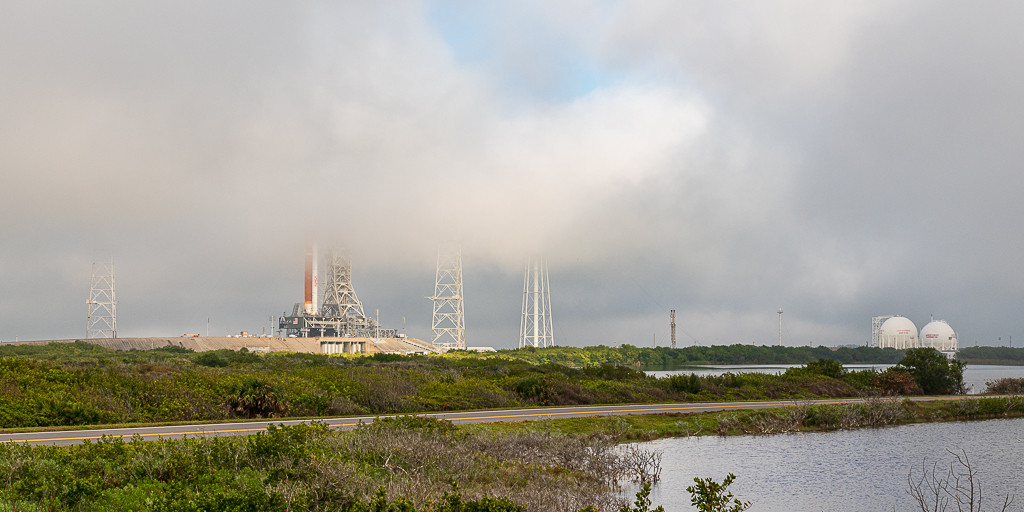
A foggy view of Launch Complex 39B. Earlier that morning the road was not even visible. Photo Credit: John Pisani / Cosmic Perspective
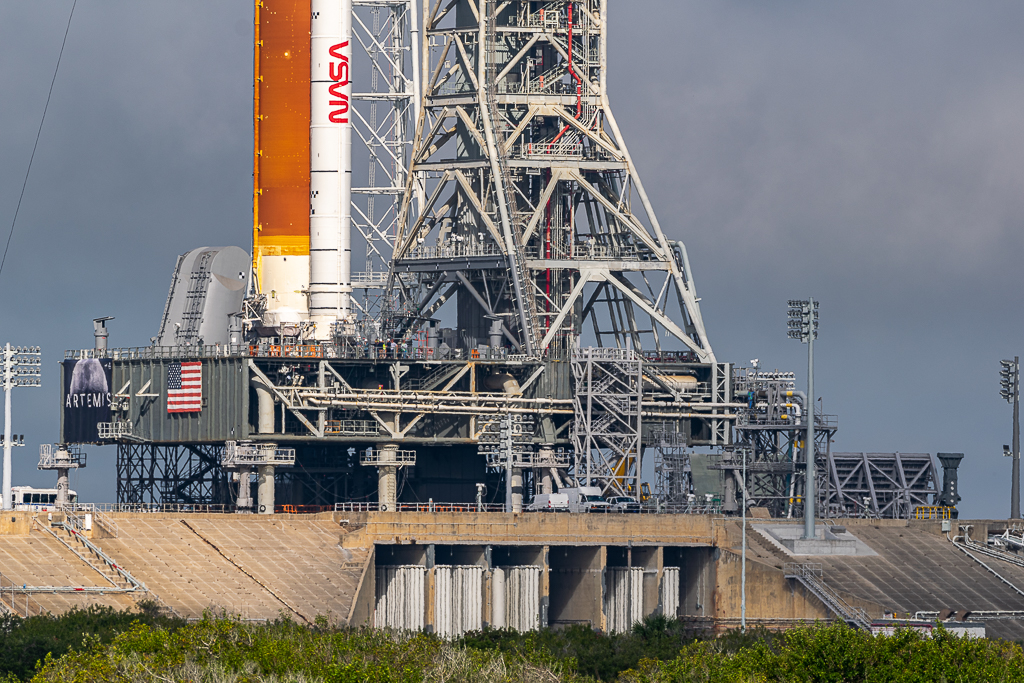
Photo Credit: John Pisani / Cosmic Perspective


